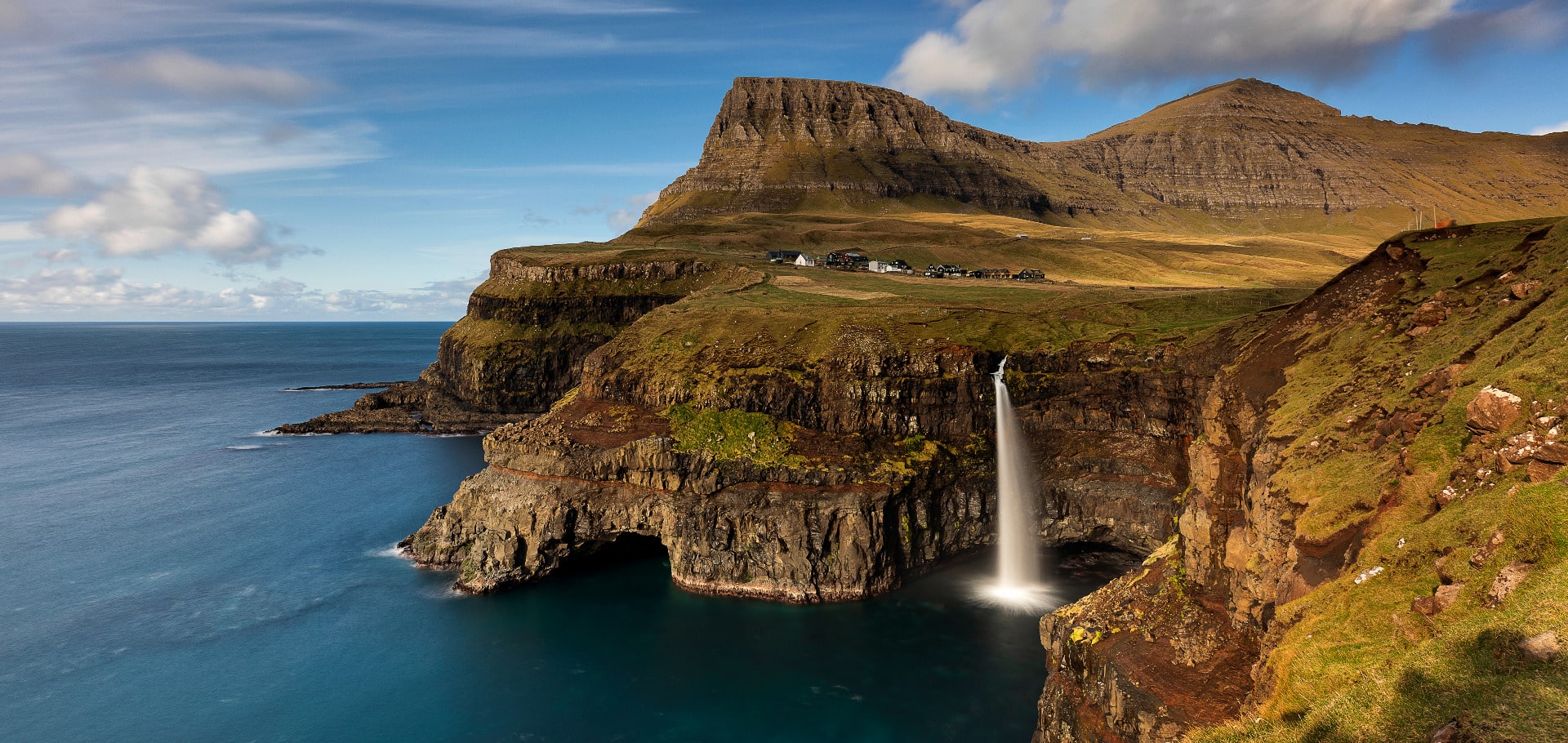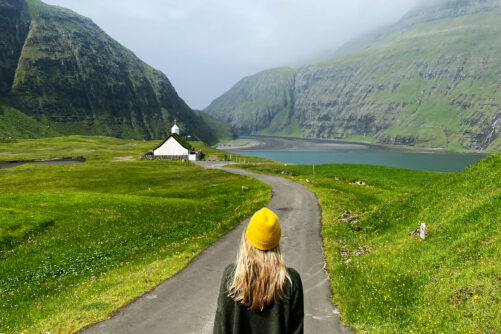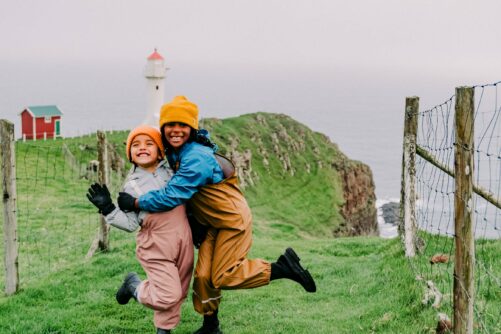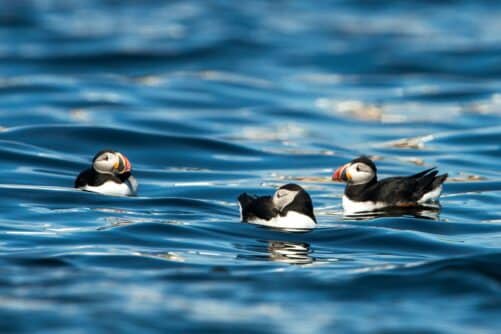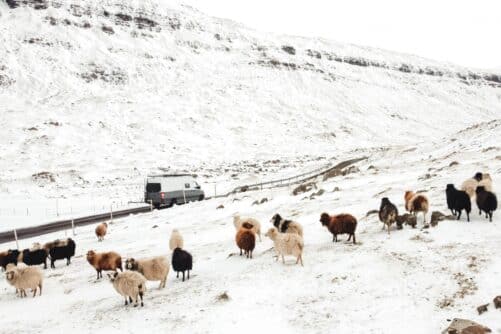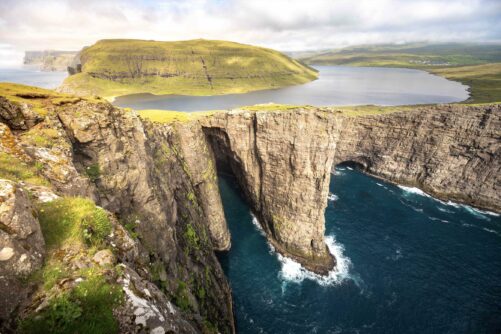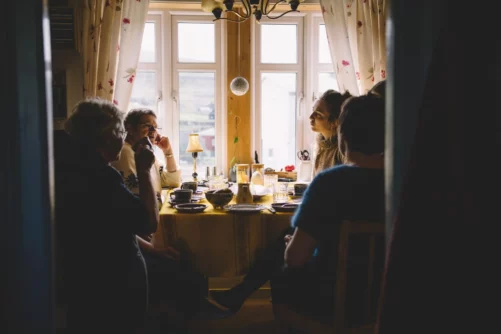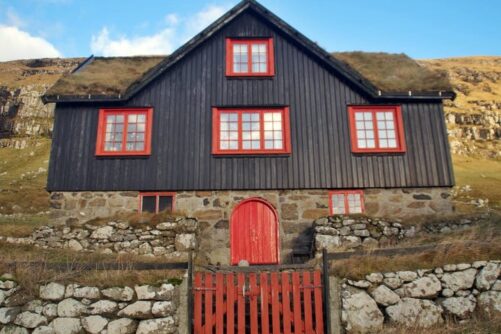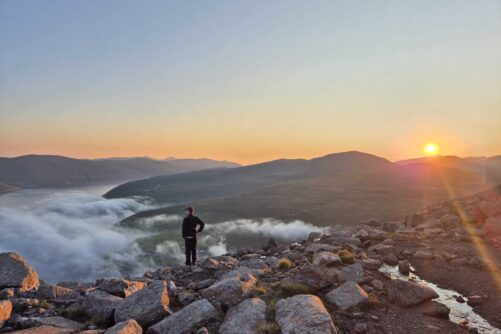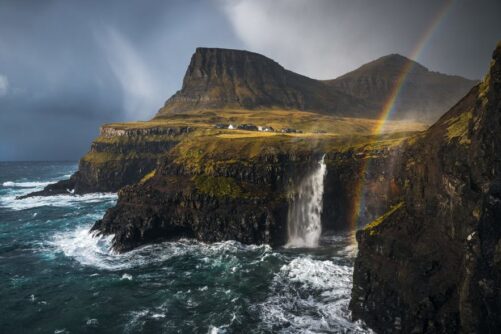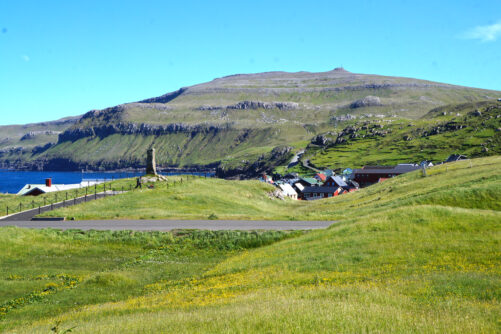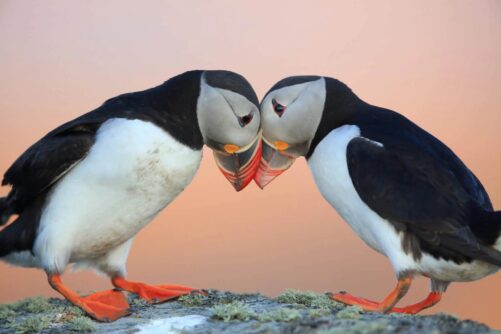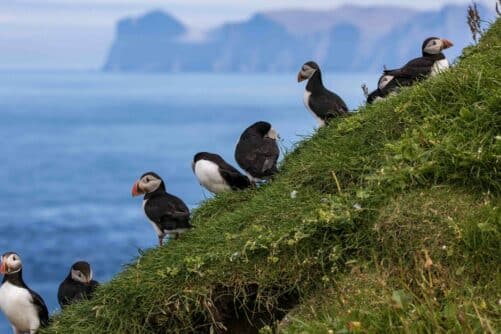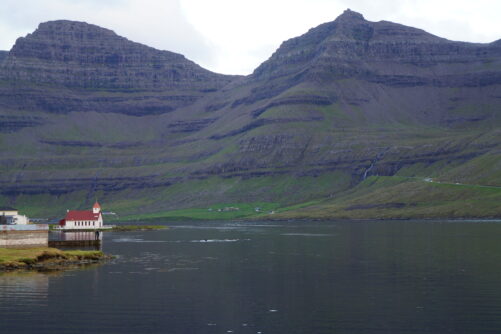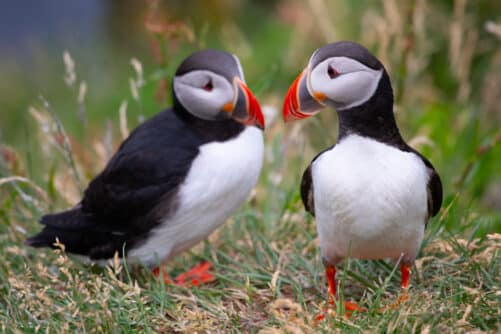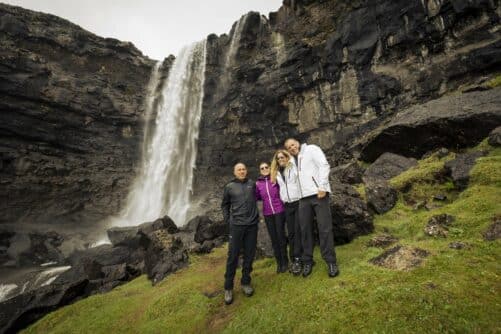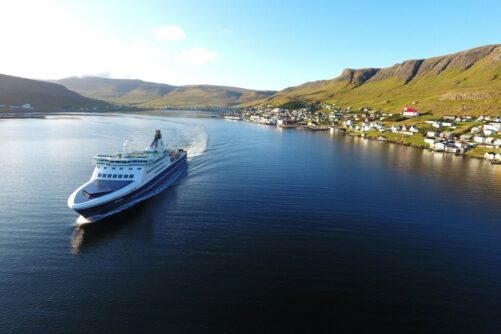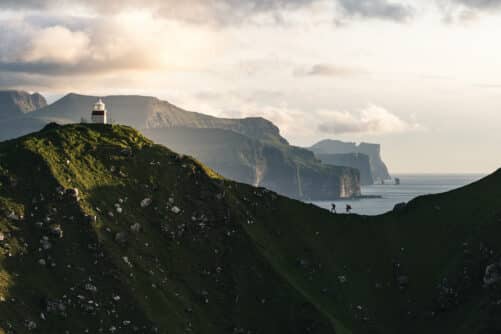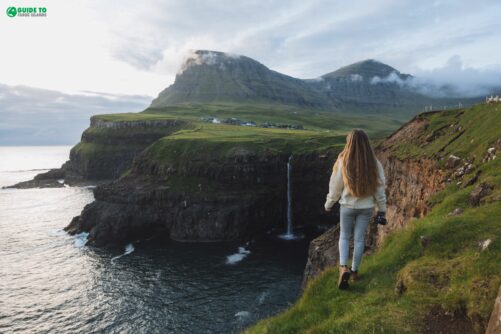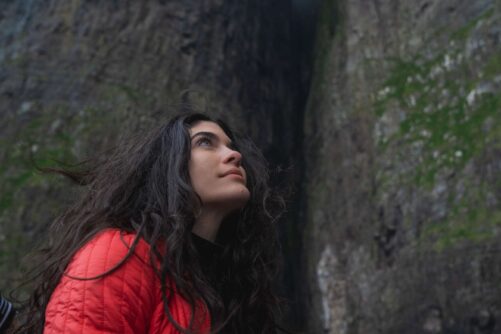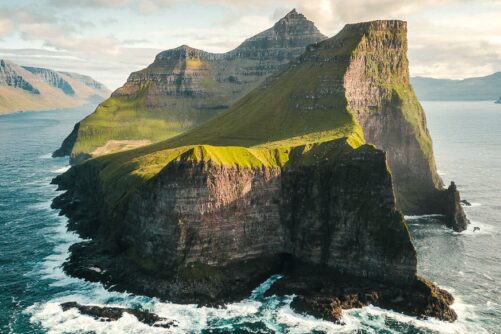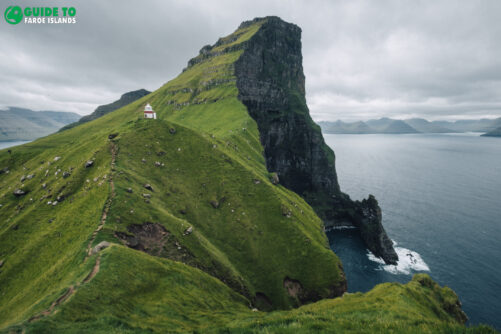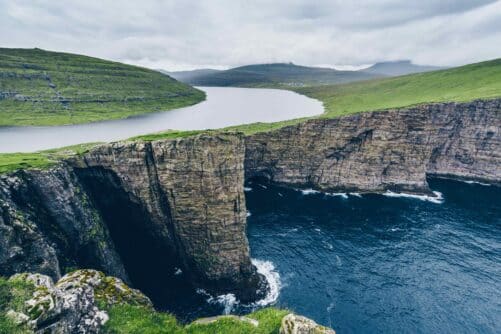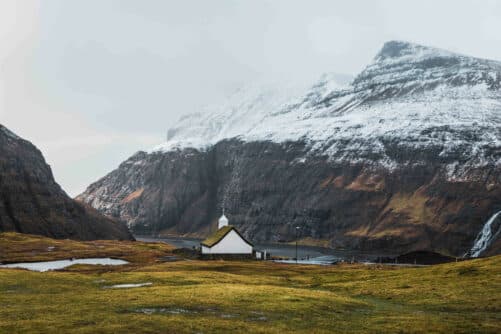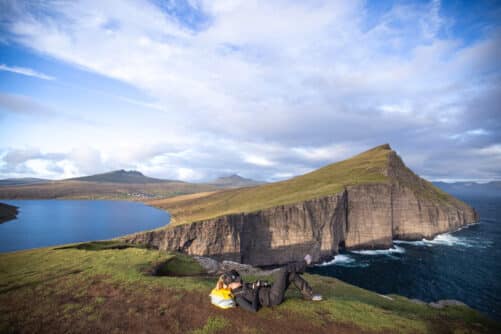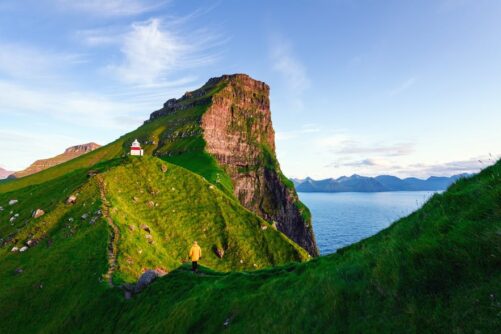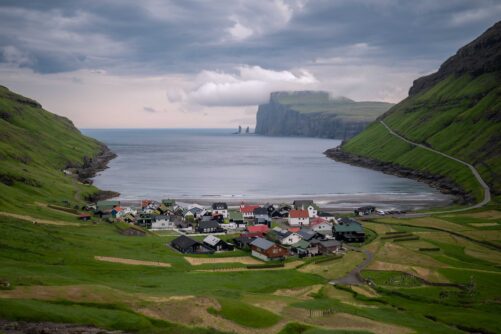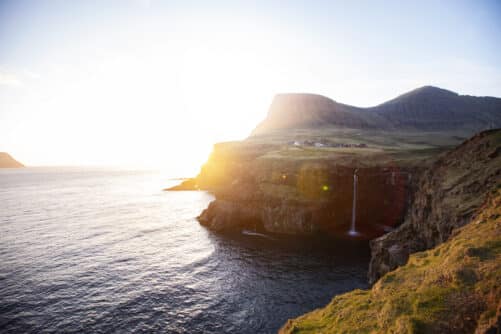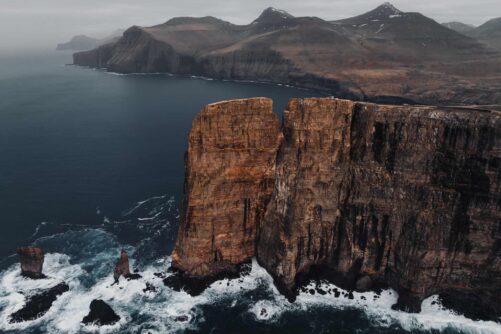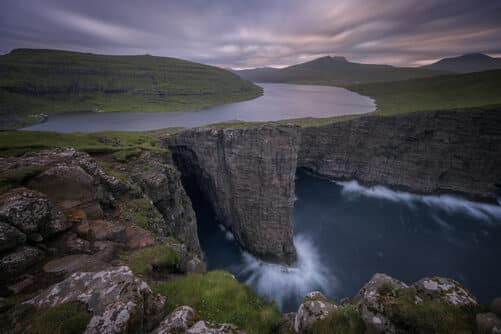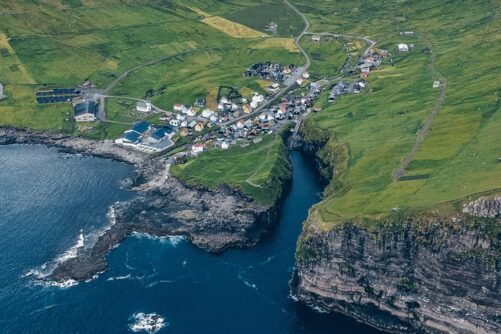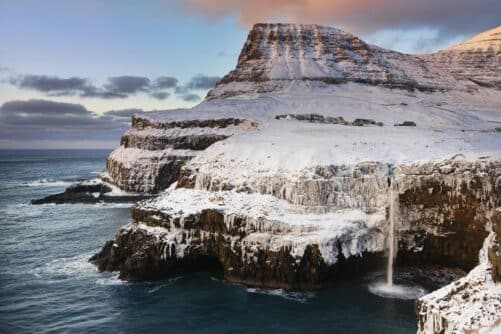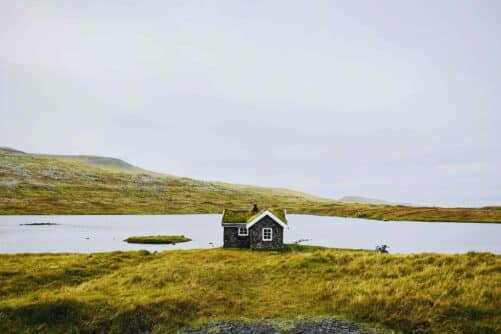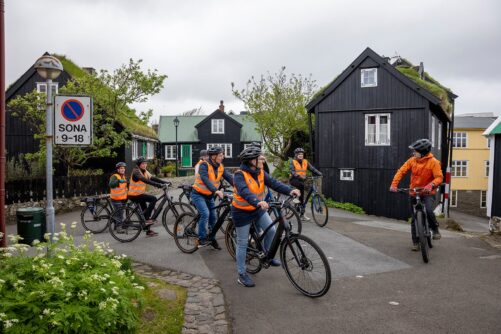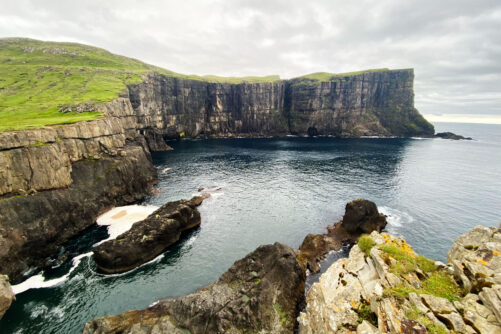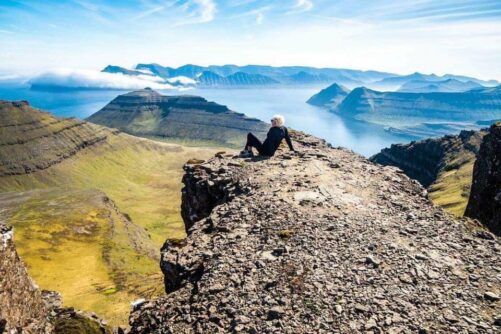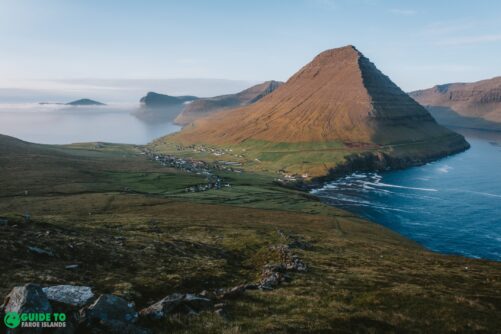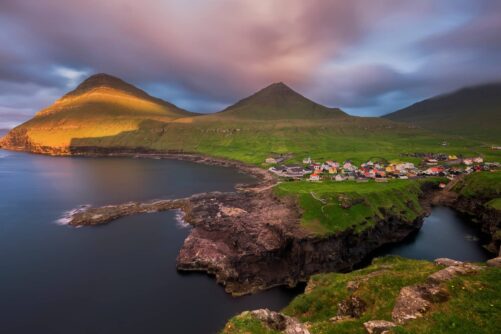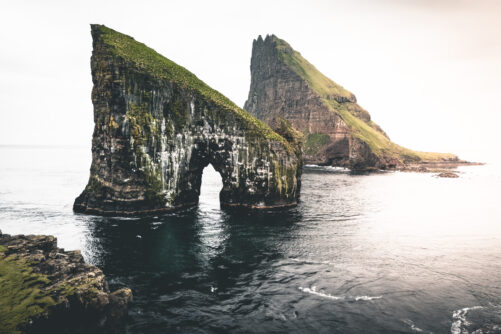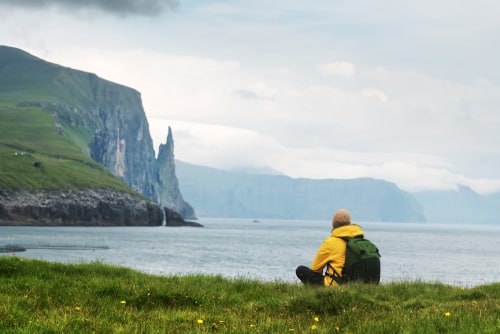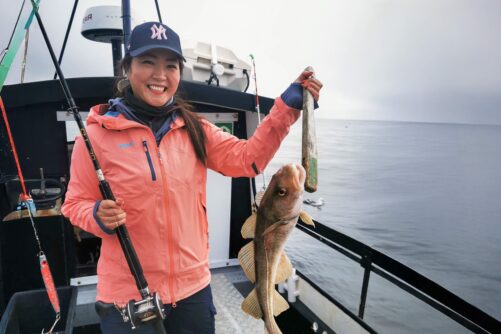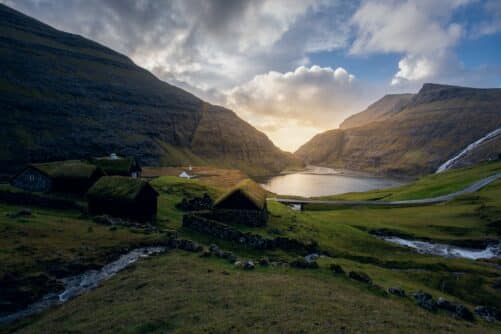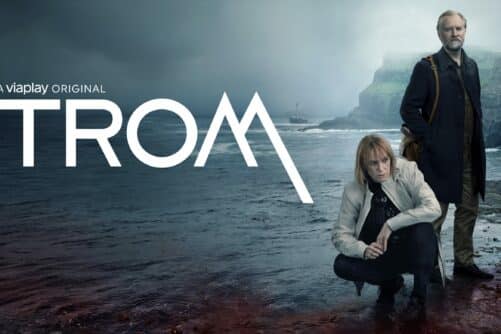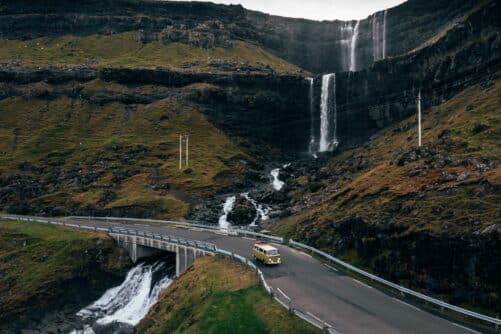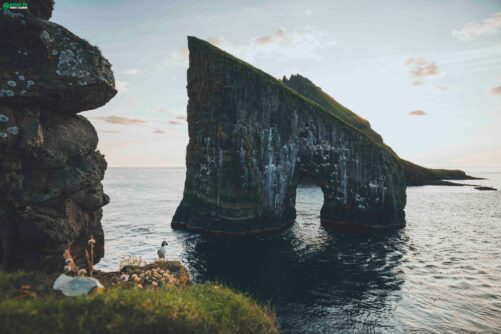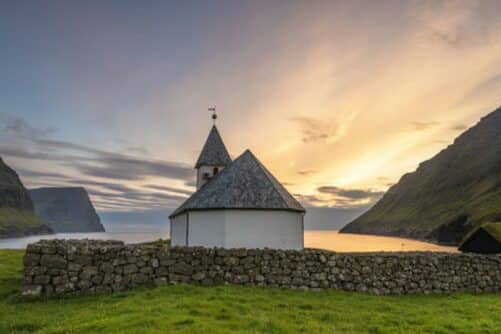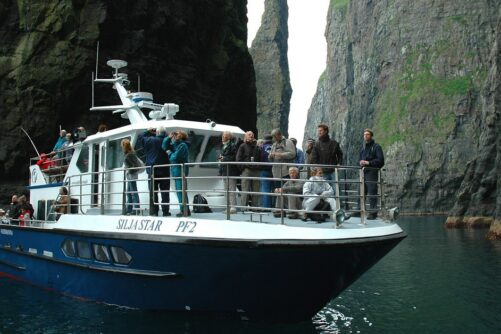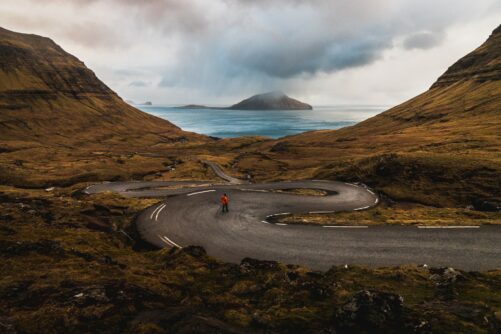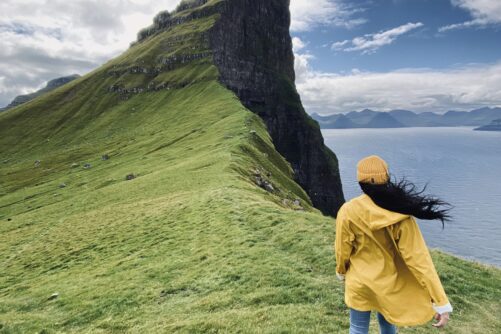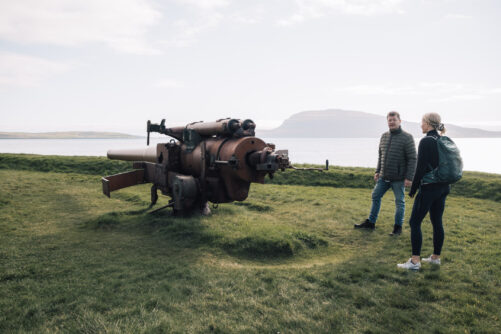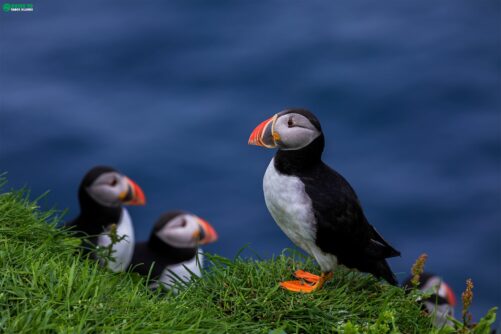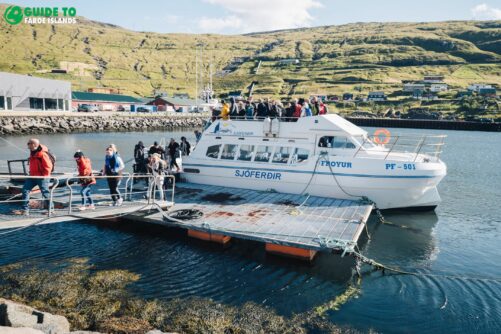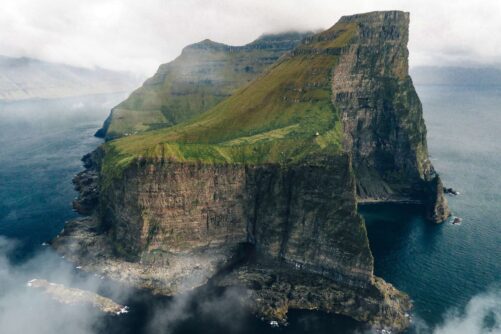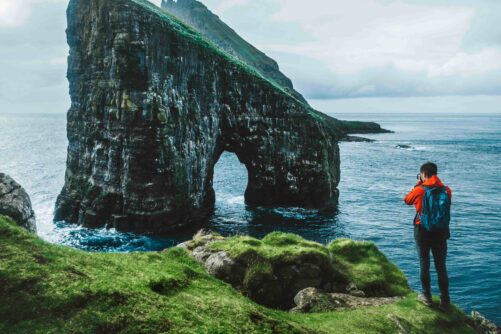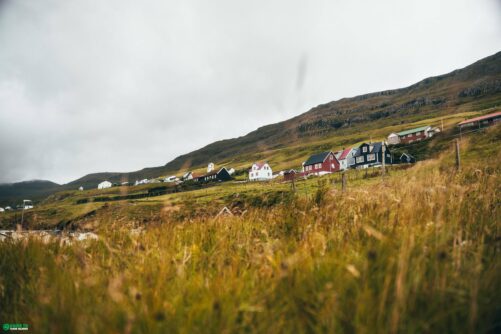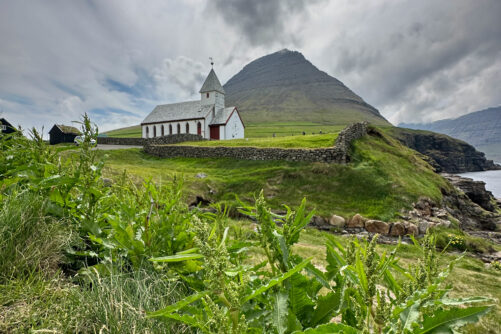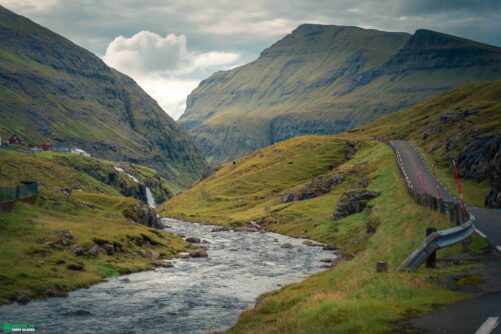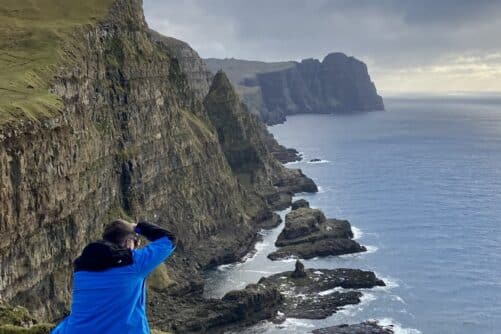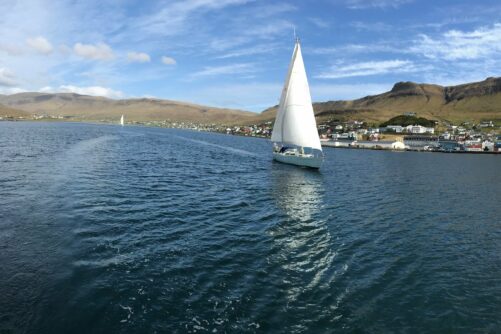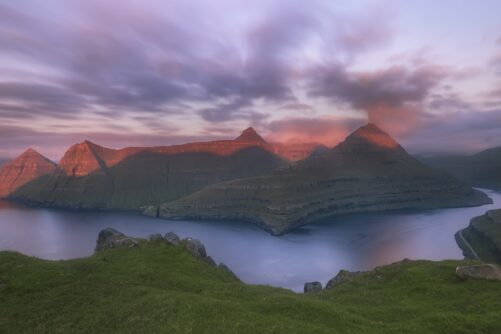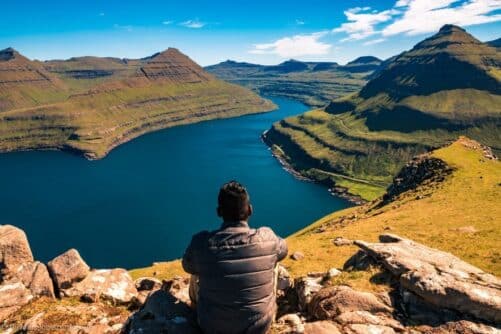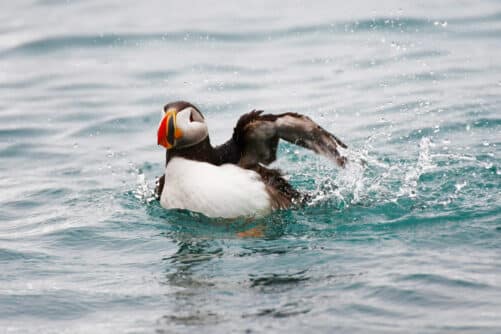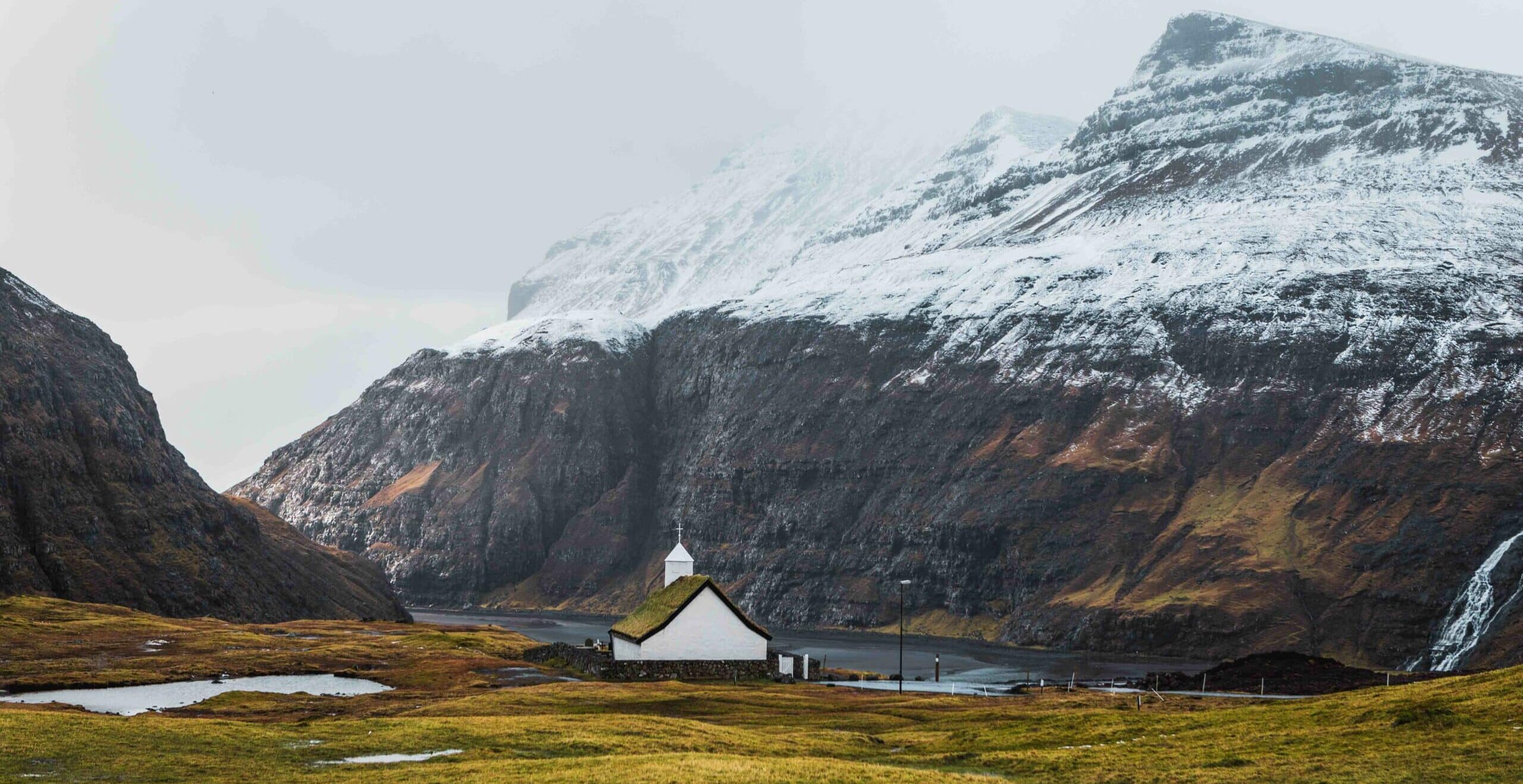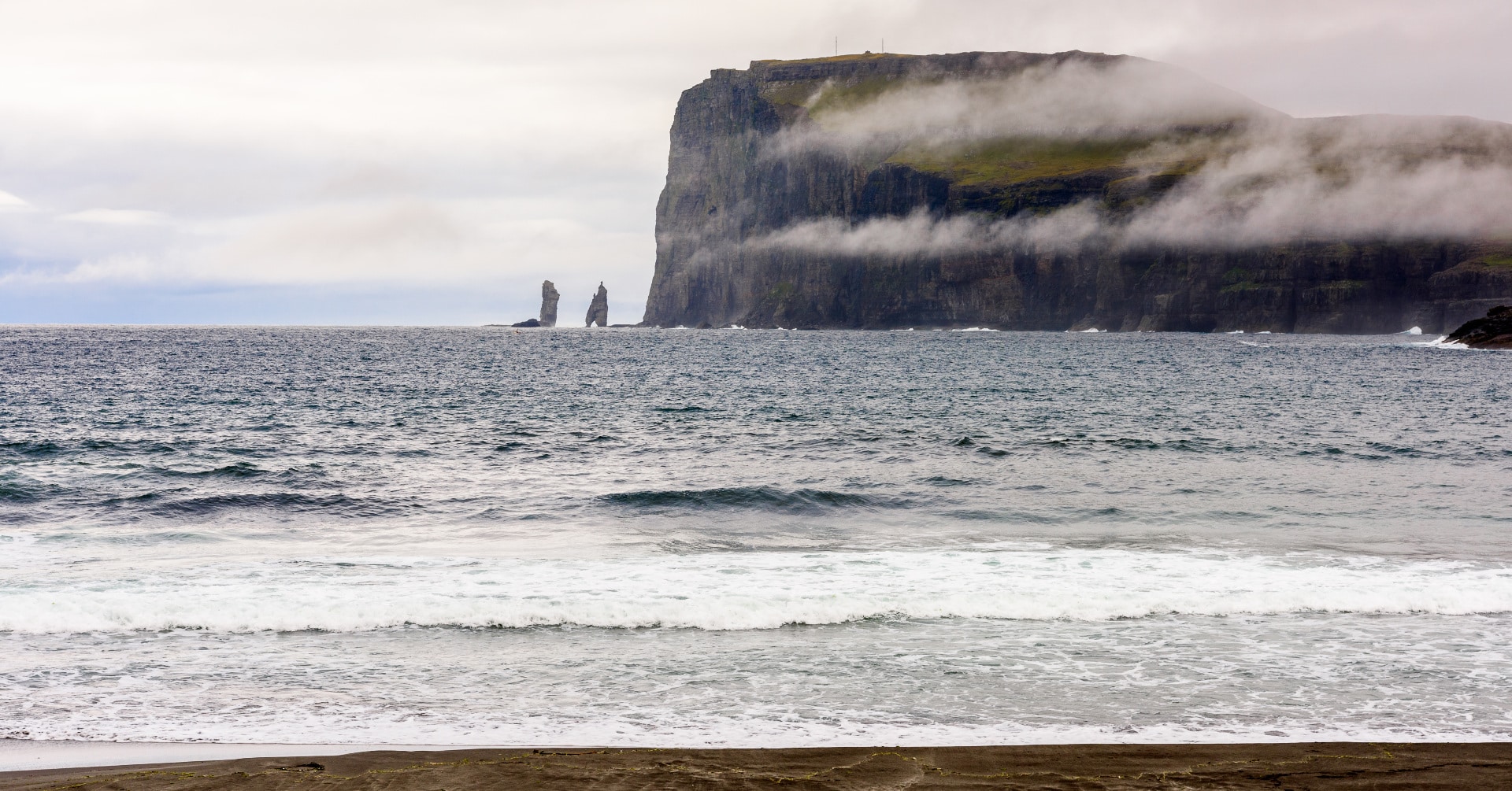
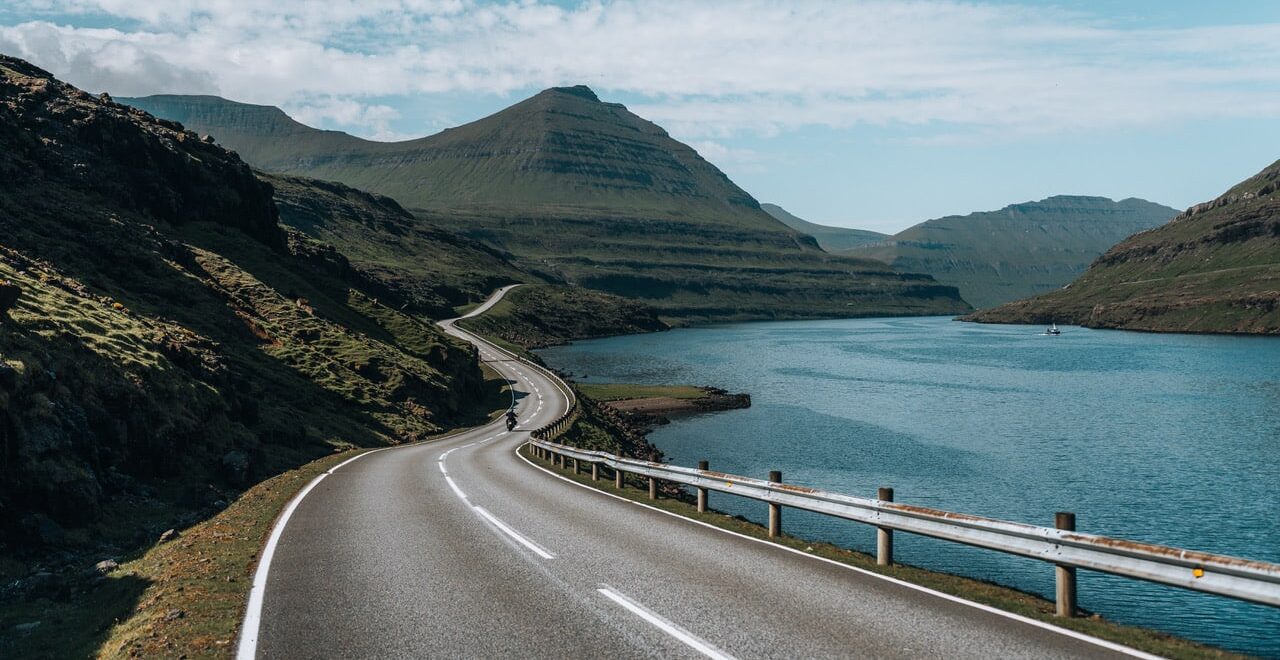
5-Day Faroe Islands Road Trip Itinerary (+ Map)
Can you experience five completely different islands in just five days, each one revealing a new side of the Faroe Islands? How would it feel to wake up each morning knowing new dramatic landscapes awaits? This five day Faroe Islands road trip itinerary takes you across five different islands, each with its own distinct character and unforgettable landscapes.
- Check out the best Boat Tours in the Faroe Islands
- Make lasting memories with The Grand 10 Day Faroe Islands Tour Package
- Discover Faroe Islands’s best Self Drive Tours
- Browse Faroe Islands Vacation Packages
From the iconic Múlafossur Waterfall tumbling into the Atlantic to the bird-filled Vestmanna Sea Cliffs, this carefully crafted route balances must-see attractions with quieter moments of discovery. You will navigate underwater tunnels connecting isolated islands, do some boating, walk ancient coastal paths, and experience the raw beauty that makes the Faroe Islands unlike anywhere else on earth.
Whether you are chasing waterfalls, searching for the perfect photo, or simply soaking in the North Atlantic atmosphere, these five days will leave you with memories. Expect a fierce desire to return.
Five days in the Faroe Islands provides an excellent foundation for experiencing the archipelago’s most iconic landscape. Nevertheless, if your schedule allows, you could easily spend ten days or more exploring the islands.
Tórshavn makes an ideal base throughout your stay thanks to its central location. This itinerary will let you stay in the capital. You have most of the islands’ highlights reachable within an hour by car via the excellent road network and subsea tunnels. This means you can return to comfortable accommodation each evening while still maximising your exploration time across the archipelago.
Day 1: Vágar Island
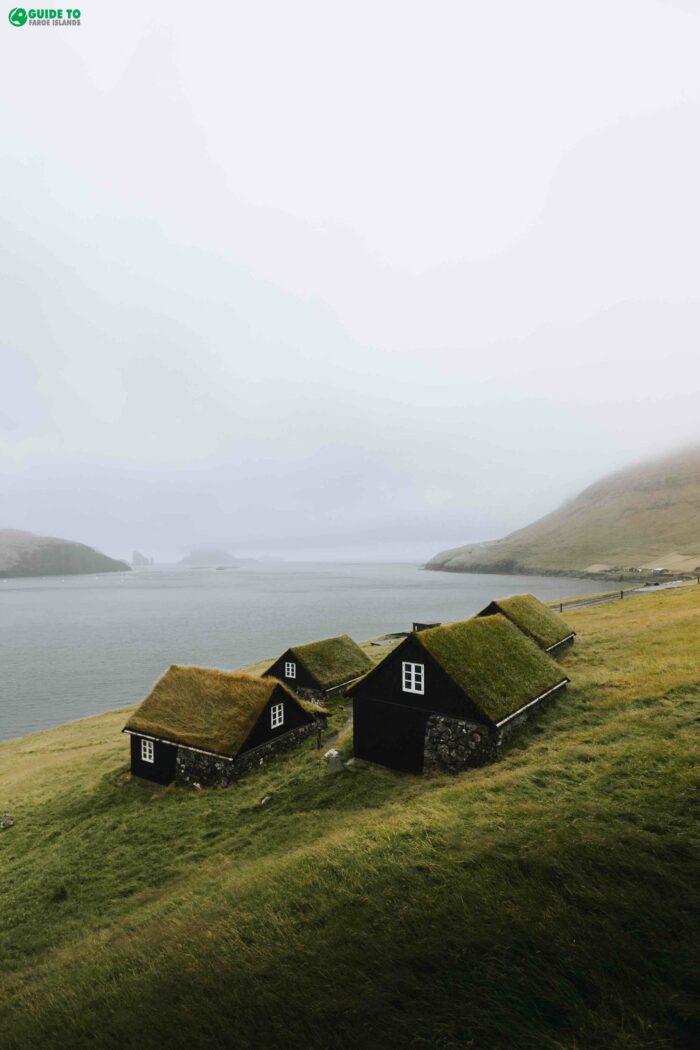
Welcome to the Faroe Islands! Your adventure begins the moment you step off the plane at Vágar Airport. After collecting your pre-booked rental car (book this months in advance), you are ready to explore the island where your journey through the islands begin and end.
Make the village Bøur your first stop. It is located only a 10 minutes drive from the airport. There is a parking lot just where you pull off. This is the best place to stop if you want to go for a stroll in the coastal settlement.
Múlafossur Waterfall
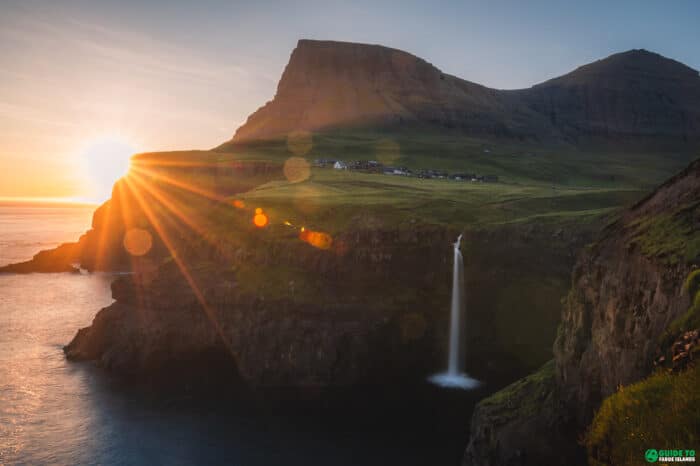
Drive to the once-isolated village of Gásadalur, now accessible by a mountain tunnel but still retaining its end-of-the-world charm. The short walk from the car park leads you to one of the most photographed scenes in the Faroe Islands.
Múlafossur Waterfall cascades over a cliff edge directly into the ocean below. The village itself, with its grass-roofed houses clustered in a green valley, feels like something from a fairytale.
Drangarnir Sea Arch
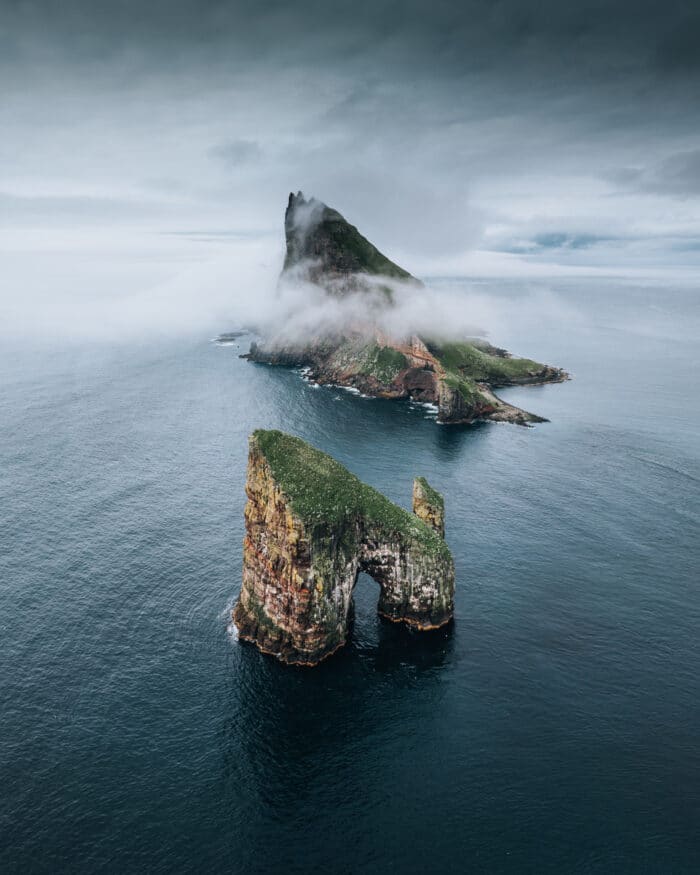
In the afternoon, join a pre-booked boat tour to Drangarnir Sea Arch, a magnificent natural rock formation rising from the waves. These towering rock formations showcase the North Atlantic’s sculptural power.
The boat journey itself offers incredible perspectives of Vágar Island. It all starts in the village Sørvágur and from there you will sail out on the Sørvágsfjørður Fjord.
Evening: Tórshavn
Drive through the subsea tunnel to Streymoy Island and arrive in Tórshavn, the world’s smallest capital. Tórshavn is your base for the next few nights.
Check into one of the hotels in Tórshavn, then explore the harbour front. Make sure to walk the historic Tinganes peninsula as the evening light bathes the turf-roofed houses in gold.
Day 2: Eysturoy Island
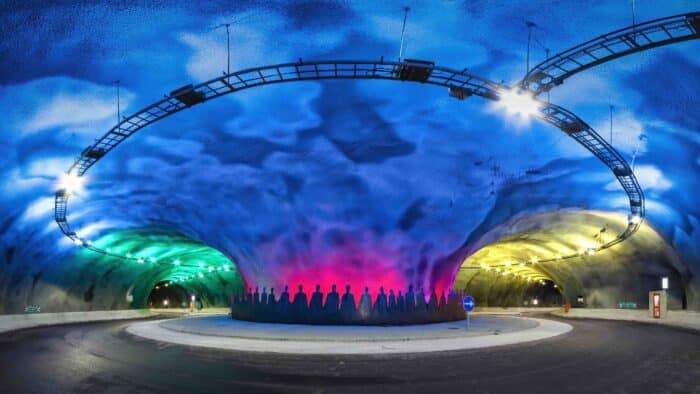
Start your day with a peaceful walk around Lake Toftavatn on Eysturoy Island. This serene reservoir sits in a peaceful mountain bowl, with trails offering views across the water to distant peaks. It is the perfect gentle introduction to the wild landscapes on the island.
You will get to Eysturoy Island from Tórshavn after driving through the underwater roundabout tunnel Eysturoyartunnilin. This is the world’s first roundabout found under the sea bed.
Gjógv | Sea Gorge Hamlet
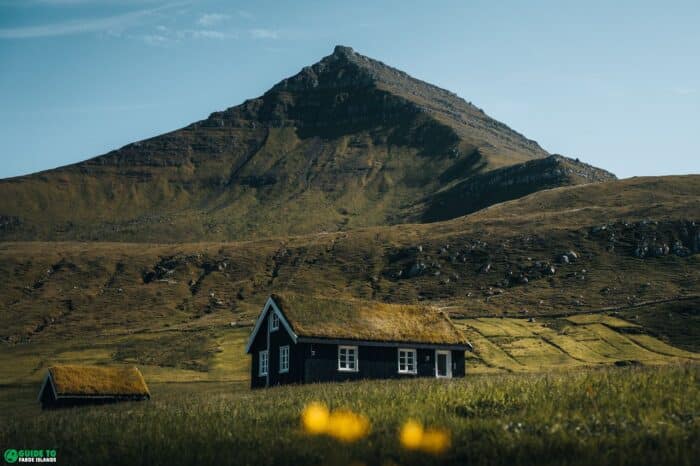
Continue north to Gjógv, one of the islands’ most picturesque settlements. This tiny place clings to a valley above a natural harbour.
A gorge cuts through the cliff at the waterfront. Gjógv means “gorge” in Faroese. Wander the narrow lane, watch the water surge into the gorge, and breathe in the salty air.
Hvíthamar Vantage Point
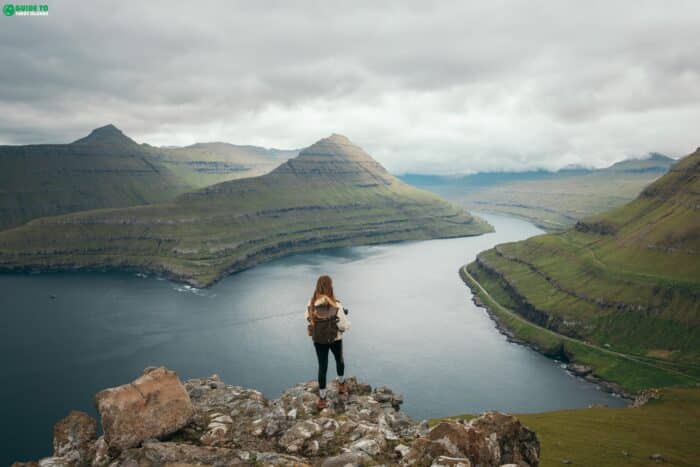
Take the soft walk to Hvíthamar Vantage Point for expansive views over fjords and mountains. On clear days, you can see a lot of peaks from this place.
The path is manageable for most fitness levels and rewards you with some of Eysturoy Islands finest panoramas. An unpaved parking lot is located at Gjáarskarð Mountain Pass from where the soft walk to the attraction starts.
Funningur Settlement

Before returning south, stop in the ancient settlement of Funningur. Enjoy the traditional houses nestled between mountain and fjord. Driving to Funningur is an adventurous experience with its curvy road down the tallest mountain in the island group, Mount Slættaratindur.
As most settlements in the Faroe Islands, Funningur is home to a church. The church comes with a sod-roof and is painted black as many of the traditional churches in the island group. Funningur maintains an atmosphere of quiet continuity with the past.
Evening: Tórshavn
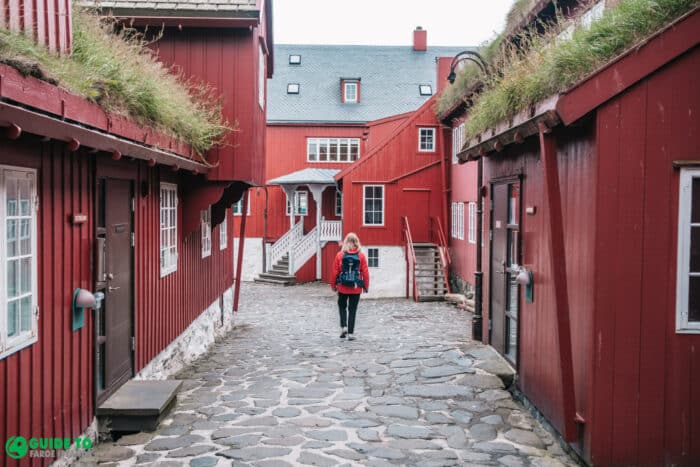
Head back to Tórshavn for dinner at one of the capital’s excellent restaurants. Book weeks in advance as tables at the best spots fill up fast.
Tórshavn’s oldest district Reyn is home to some excellent dining options. It is always rewarding to walk the narrow, cobble stone street in this area.
Day 3: Sandoy Island
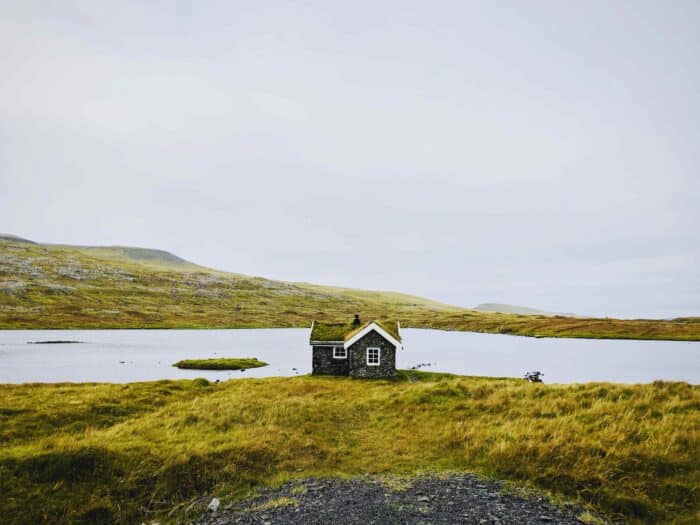
Today’s adventure begins with a drive through Sandoyartunnilin. This is a the underwater tunnel connecting Streymoy Island to Sandoy Island.
Emerging on this quiet island feels like entering a different world. The mountains here are lower, the hills more gentle. Sandoy Island takes you to a slower pace of life.
Skopun to Líraberg Cliff
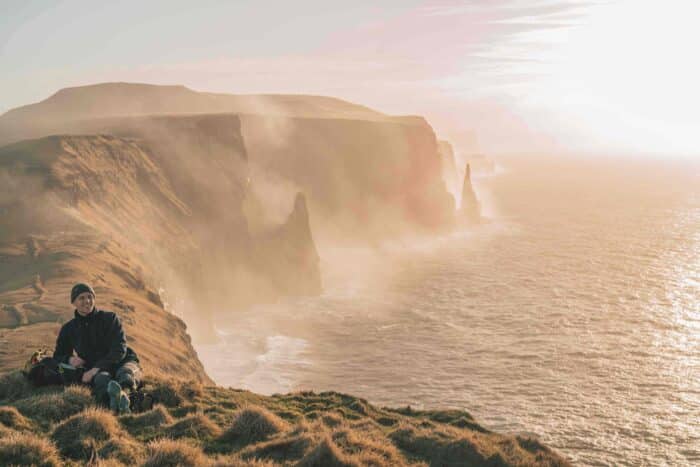
Start at Skopun harbour, then lace up your hiking boots for the walk to Líraberg Cliff. This dramatic promontory offers commanding views of the rugged western coastline of Sandoy Island.
Simply follow coloured wooden sticks in the grassy terrain and you will get to the best spot. The walk is doable for most people.
Dalur Settlement
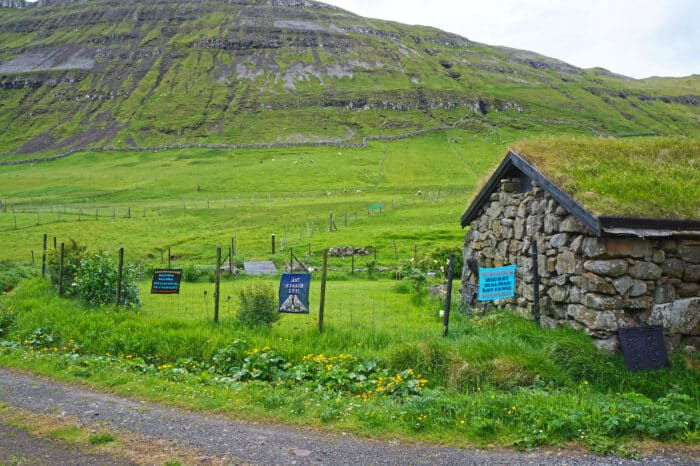
Drive to Dalur, Sandoy Island’s isolated settlement. Farmers established themselves here over a thousand years ago.
The hamlet sits in a sheltered valley. Dalur means “valley”. This place is surrounded by gentle slopes that contrast beautifully with the coastal drama unfolding in front of you towards the ocean.
Húsavík Hamlet
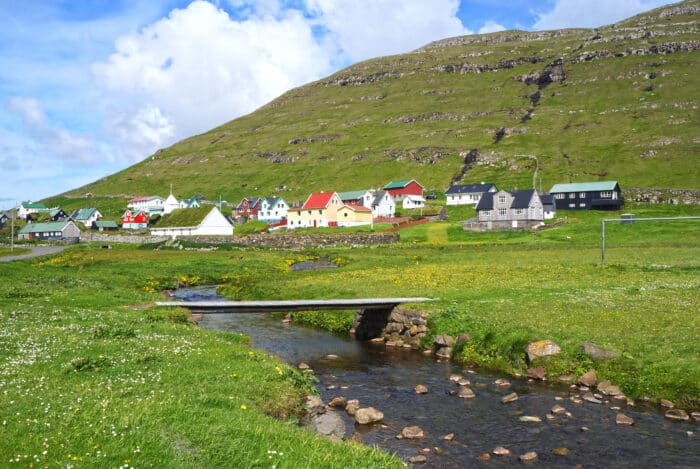
Make a quick stop at Húsavík, a tiny settlement with photogenic turf-roofed houses and ocean views. It is a perfect example of how even the smallest villages punch well above their weight in beauty.
Return to Tórshavn
Drive back through the tunnel to Streymoy Island, perhaps stopping for a late afternoon coffee in Tórshavn before another evening in the capital. There are great café options in downtown Tórshavn.
Day 4: Suðuroy Island
Rise early for the morning ferry from Tórshavn to Tvøroyri on Suðuroy Island. This is the southernmost island in the archipelago.
The two-hour journey is an experience in itself, offering perspectives on the islands you simply can not get from land. Keep your camera ready and your eyes on the horizon. This will be your longest day away form the capital.
Beinisvørð Promontory
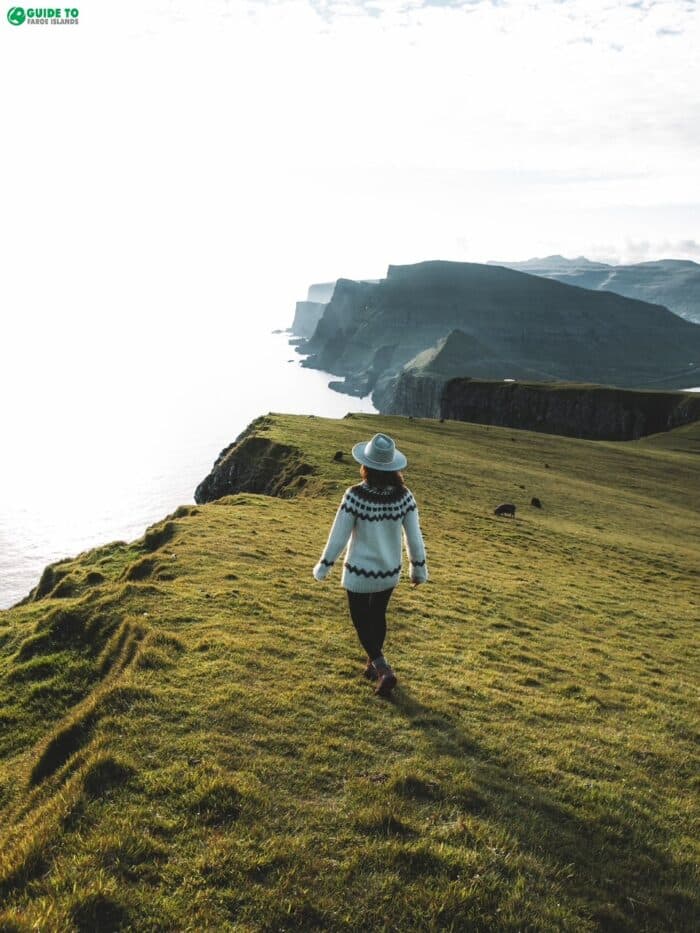
From Tvøroyri, drive south to Beinisvørð Promontory, one of the most spectacular cliffs in the North Atlantic. At 470 metres (1542 feet), it plunges almost vertically into the ocean. Keep a safe distance to the dramatic edge as you soak in the views form the top of the attraction.
Sumba Settlement
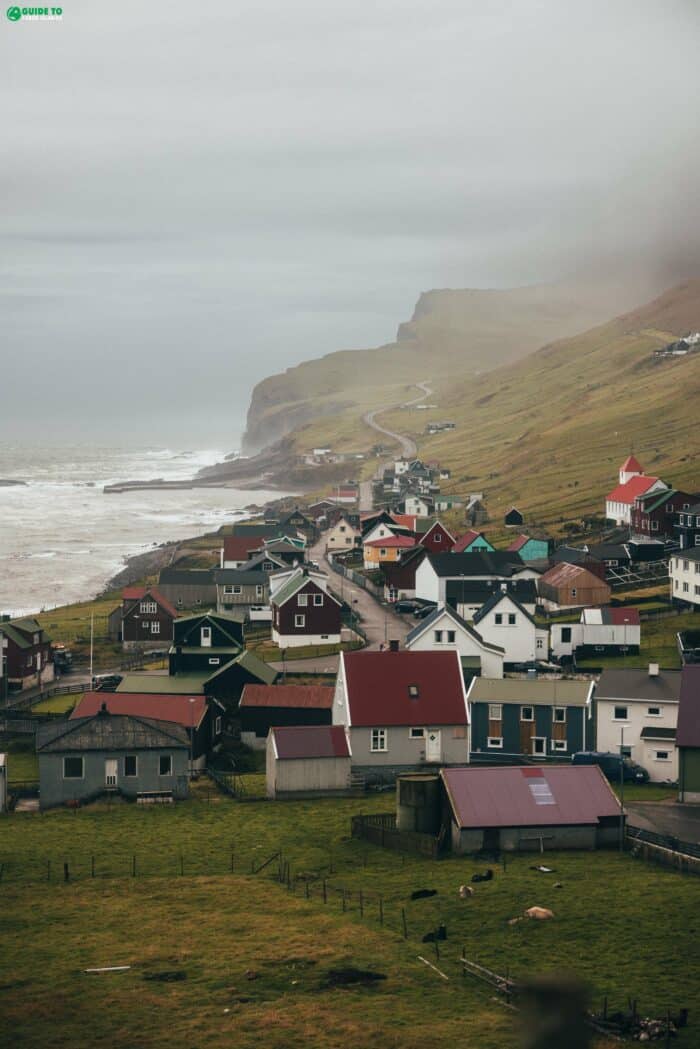
Continue to Sumba, the southernmost village in the Faroe Islands and one of the most remote inhabited places. The village sits exposed to the full force of North Atlantic weather, yet people have lived here for centuries. Walk through the settlement and feel the raw power of this frontier location.
Eggjarnar Cliff Viewpoint
Drive to the Eggjarnar viewpoint for more coastal drama. The cliffs here are nesting sites for countless seabirds, and the views along Suðuroy Island’s coast are magnificent.
It all starts form the village Vágur. Take the unpaved road to the coastal views. Drive slowly as the road is not covered with tar.
Fámjin Village
Take your time exploring Fámjin, one of the most beautifully located settlements in the Faroe Islands. Fámjin has a history stretching back to the Viking age.
The village church is home to the first ever Faroese flag. Do not expect the church to be open. In case the white painted church is open, you are welcome to go inside.
Evening Ferry to Tórshavn
Catch the evening ferry back to Tórshavn, watching the islands recede in the soft evening light. There is a decent café on the ferry serving sandwiches and warm food as well. After a full day on Suðuroy Island, you will appreciate your hotel bed tonight.
Day 5: Streymoy Island
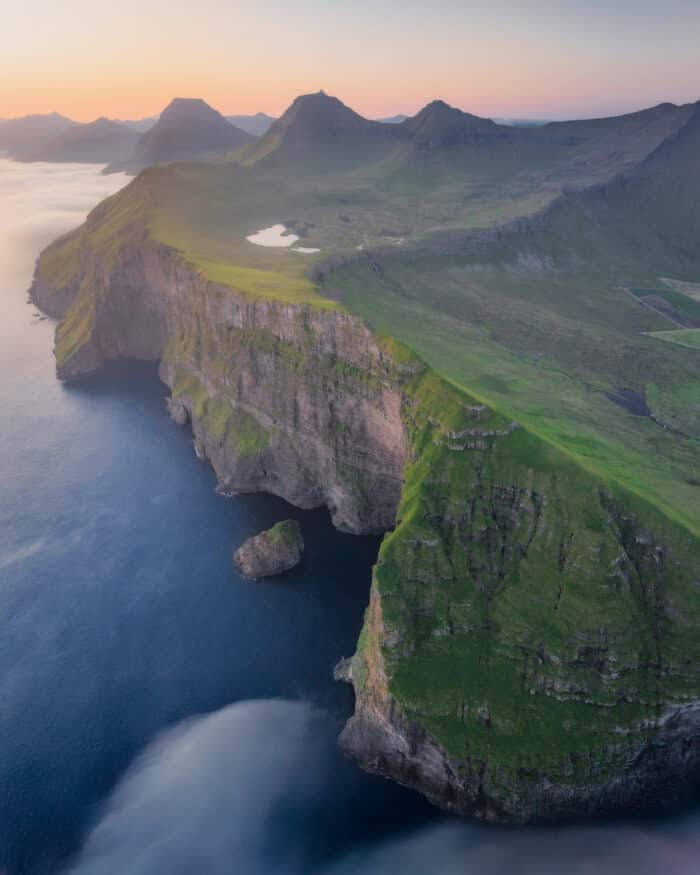
Streymoy Island is the largest island in the Faroe Islands and serves as the archipelago’s cultural and administrative heart. Remarkably, the capital island houses approximately half of the entire Faroese population.
Visitors and residents alike are captivated by its stunning landscapes. The island features dramatic cliffs, rolling green hills, and picturesque coastal villages.
Vestmanna Sea Cliffs

Begin your final day with a morning boat trip from Vestmanna to the Vestmanna Sea Cliffs. Pre-book your spots to secure yourself seats on the boat to Vestmanna Sea Cliffs. These towering cliffs host thousands of nesting seabirds. From puffins, guillemots, razorbills, to fulmars.
The boat threads through narrow channels between rock walls rising overhead, entering sea caves and grottos carved by millennia of wave action. It is pure drama and an unforgettable finale to your trip.
Saksun Village
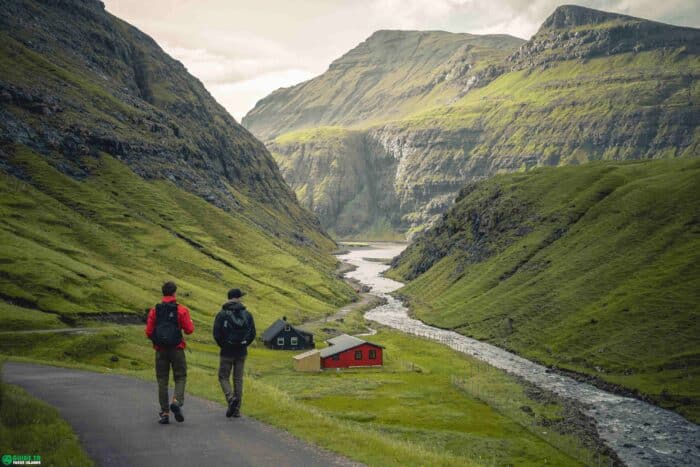
Drive north to Saksun, a village so impossibly scenic it barely seems real. Nestled in a steep-sided valley with a tidal lagoon and black sand beach, Saksun represents the Faroe Islands at their most theatrical.
Walk down to the beach, visit the turf-roofed church, and simply absorb the atmosphere of this extraordinary place. You can easily spend a couple of hours here.
Tjørnuvík Black Sand Beach
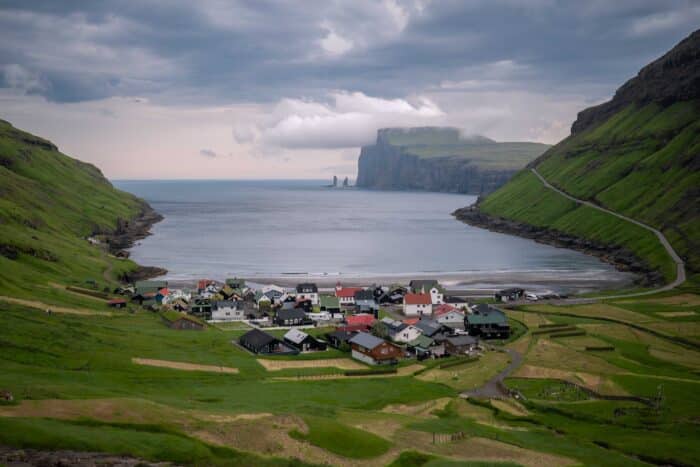
Continue to Tjørnuvík further north on the island. This village sits at the foot of towering mountains, with a dramatic black sand beach facing the jagged sea stacks of Risin and Kellingin.
Local legend says these stacks were once giants, turned to stone as they tried to drag the Faroe Islands to Iceland. Tjørnuvík is a great place to watch the rock formations.
Kirkjubøur Historical Site
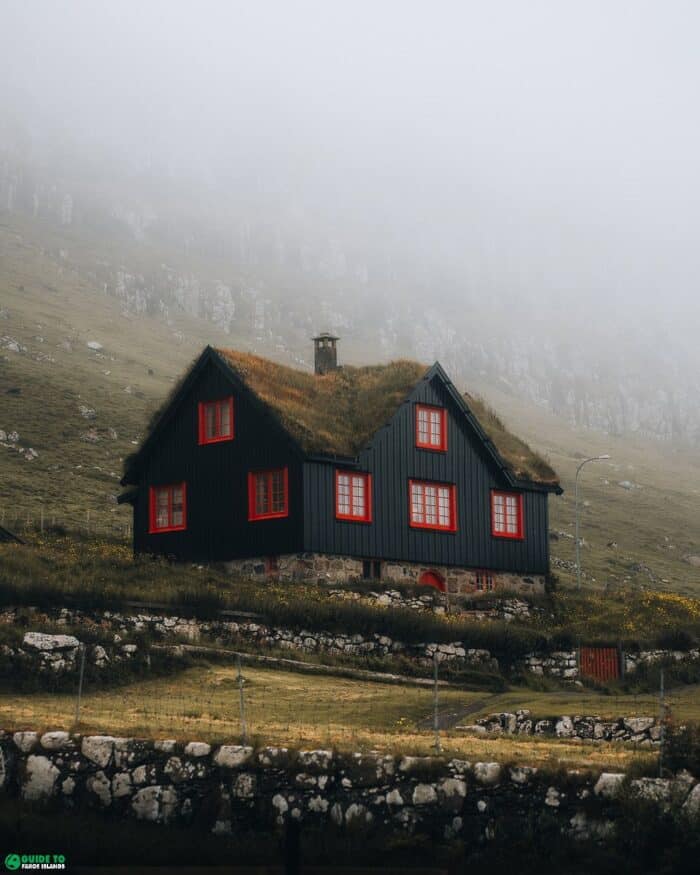
Make a last stop at Kirkjubøur, the most important historical site in the Faroe Islands. The 13th-century ruins of Magnus Cathedral stand alongside Roykstovan, one of the oldest inhabited wooden houses in the world (dating to around 1100 AD).
The village offers a tangible connection to the islands’ medieval past. There are plenty of sod-roofed houses in the settlement.
Return to Vágar Airport
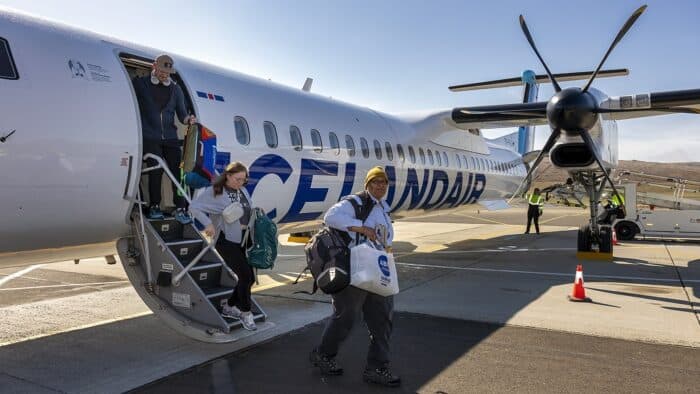
Complete the loop by driving back through the tunnel to Vágar Island. Returning your rental car at the airport with your head full of memories and your camera full of photos that somehow still do not capture what you have experienced.
Vágar Airport is very small and the daily traffic is modest. Even on the most busy days, there are never more than around 15 take-offs. This means that being at the airport way more than 1 hour ahead of departure will have you waiting at the airport for the flight instead of spending more time exploring.
Essential Tips
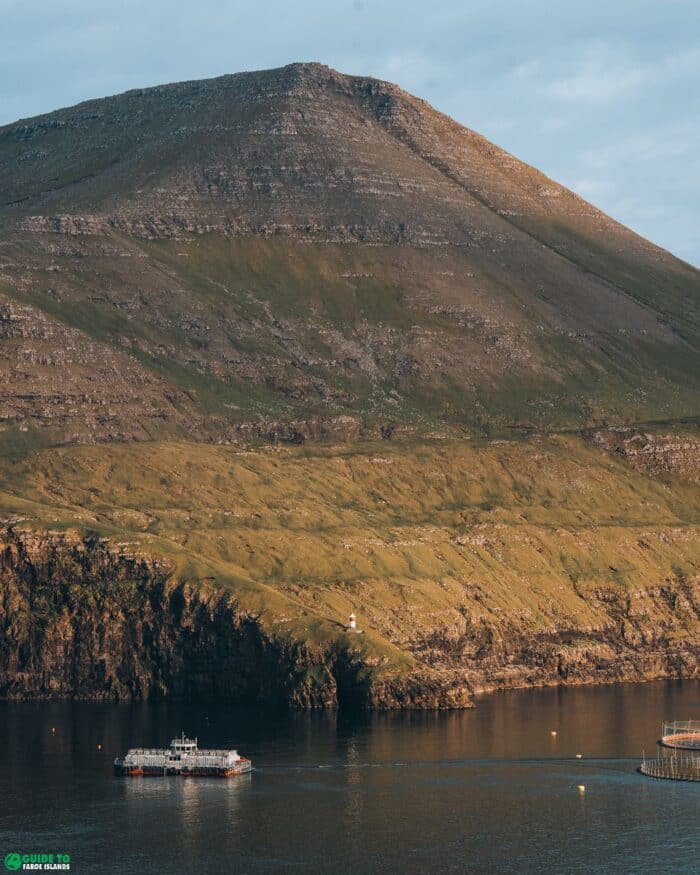
Before visiting the Faroe Islands, there are several practical considerations that will help ensure a smooth and enjoyable trip. Understanding weather patterns, logistical realities of island life and more can make a significant difference in your experience. Here are some kay things to know:
- Book in Advance
- Prepare for changing weather
- Sheep roams freely
Being well-prepared allows you to focus on the archipelago’s breathtaking scenery and culture rather than unexpected challenges. With a bit of advance knowledge, you’ll be ready to make the most of your time in this remarkable North Atlantic destination.
Book Everything in Advance
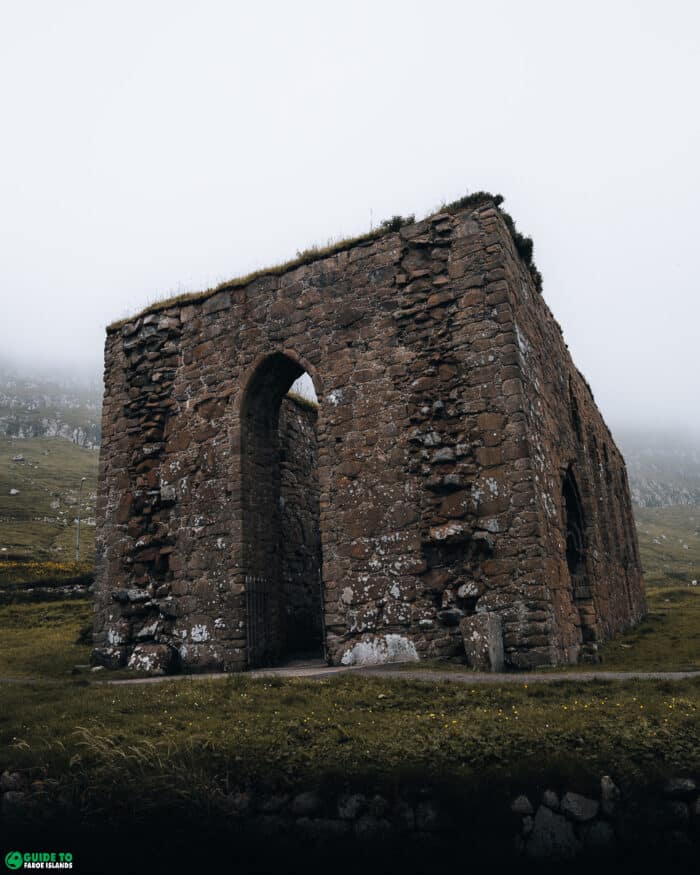
The Faroe Islands has only a limited number of annual travellers. This makes accommodation and rental car options limited. Book your rental car and hotel or other form of accommodation several months ahead, especially if traveling in summer from May through September. Restaurant reservations in Tórshavn should be made weeks in advance.
Weather is Unpredictable

Weather in the Faroe Islands can cycle through four seasons in a single day. Pack waterproof clothing, warm layers, and do not be discouraged by clouds. Clouds often create the most dramatic light for photography. That said, be prepared to adjust your plans if weather creates any challenges.
Respect the Sheep
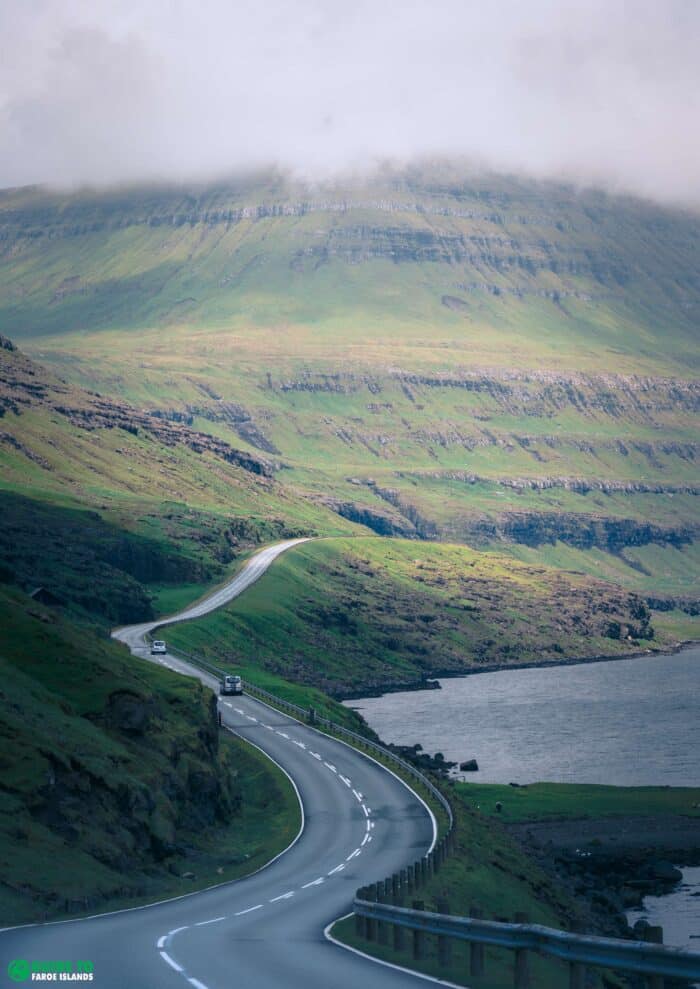
Sheep roam freely throughout the archipelago and often occupy the roads. Drive carefully, especially on blind corners and hills. Never honk at sheep as they tend to freeze rather than move. Just be patient; they will wander off eventually.
Driving in the Faroes
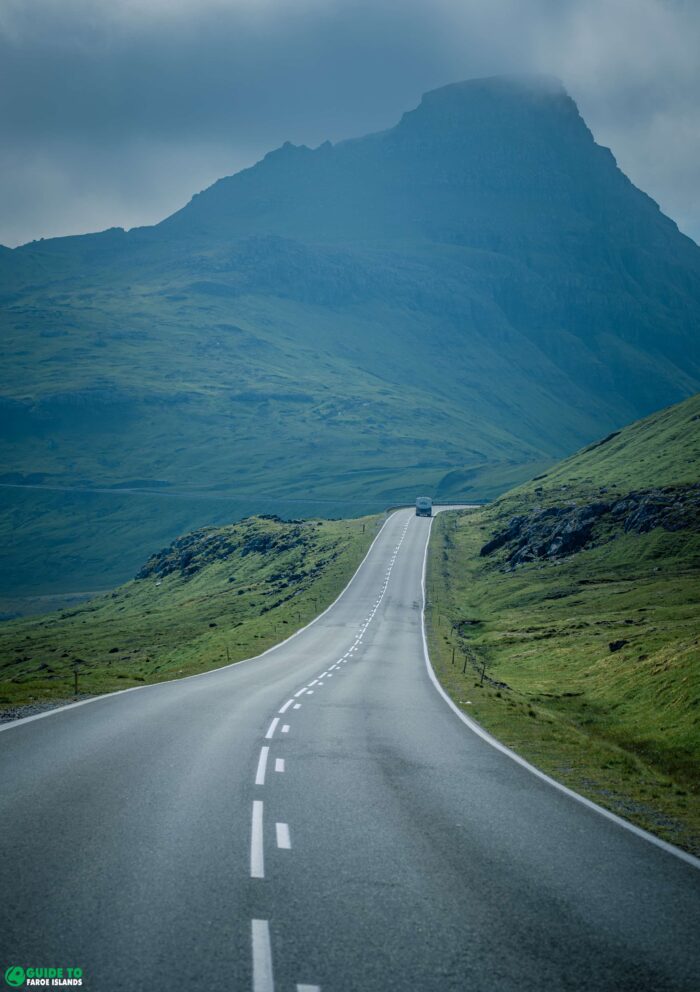
Roads in the Faroe Islands are well-maintained. Some roads are narrow, some winding, some stretches are single-track with passing places. Drive cautiously, especially in tunnels. Some tunnels are unlit and some single-lane with passing places. Speeds are lower here than you might expect. Embrace the slower pace.
This five-day itinerary scratches the surface of what makes the Faroes so special, but it captures the essence: dramatic landscapes, remote villages, and that particular quality of light found only in the North Atlantic. You’ll leave already planning your return—because five days in the Faroe Islands is never quite enough. Want to know more? Read 18 things to know before your first trip to the Faroe Islands.


